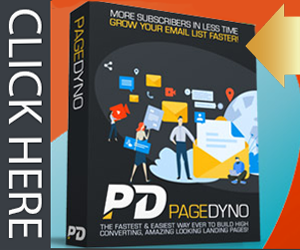‘Why ‘WHAT’ is a Good Starting Point for Most Article Outlines’ – Sean D’Souza’s Article
Sean D’Souza’s latest ‘PsychoTactics’ article is titled “Why ‘WHAT’ is a Good Starting Point for Most Article Outlines”. [PsychoTactics Article]
Sean D’Souza’s latest ‘PsychoTactics’ article:
‘Why ‘WHAT’ is a Good Starting Point for Most Article Outlines'</font
In any article writing outline you could start with just about any point of view. Your article could start off answering the questions “why, how, when” etc. So why start with “What”? And when do you start with “What”?
===============================================
There’s a simple answer…
===============================================
“What” brings all your readers on the same page in a microsecond.The moment you tell me “What” you’re referring to, I’m locked in to your wavelength. As a reader, I know “What” you’re talking about.
===============================================
And it’s critical to have “What” at the starting point
===============================================
Because if you don’t, the reader is often meandering through your text trying to work out “What” you’re referring to. But waitasecond, readers rarely meander. If they don’t get answer to
their question in a matter of seconds, or are confused by the direction, they just stop reading.
And more often than not, the reason for this bail out is because you haven’t answered the question “What” in the first place.
===============================================
So let’s take an example of a few headlines:
===============================================
How Chunking Down Increases Your Expert Status Why the Yes-Yes Factor Helps Bring Back Customers The ‘Chocolate Theory’ of Creating Sequential Products and Services
All of these headlines attract attention because they’ve got these curious-sounding terms or specifics. This draws the customer in, but soon confuses them if you don’t get to the “What” question early in the article.
===============================================
But “What” doesn’t apply to all article outlines
===============================================
So if the concept is clear at the start: e.g. “How to increasing coffee prices”, you’ll look like a propah idiot if you go about trying to explain “What” you mean by “increasing coffee prices”.
It’s only when you have something unusual or specific that you’re going to need to get customers on the same page.
===============================================
And some examples again where “What” isn’t needed at the start ===============================================
How to retain 90% of everything you learn The Logical Case For Increasing Your Prices Understanding What “Focus” Really Means
===============================================
In summary:
===============================================
1) Answering the question “What” enables the reader to be on the same page as you.
2) “What” is critical in situations where there is a chance of confusion e.g. when you use unusual terminology.
3) A confused reader bails quickly if you don’t answer the question “What”.
4) “What” is not needed to start all articles. It doesn’t need to hog the spotlight all the time.
So the next time you’re writing an article, think about the reader. Will they quickly grasp your point of view? Or will they be confused?
If you have even the slightest doubts that the reader is not on the same page as you, make sure you slide in the “What” at the top. It helps calm the reader down and allows them to read the rest of the article without confusion.
Sean D’Souza
©Psychotactics Ltd. All rights reserved.
Wouldn’t you love to stumble upon a secret library of small business ideas? Find simple, yet electrifying ideas, on copywriting, public speaking, marketing strategies, sales conversion, psychological tactics and branding. Head down to http://www.psychotactics.com/ today and judge for yourself. Psychotactics Subscription Page.
*IMNewswatch would like to thank Sean D’Souza and Psychotactics for granting permission to reprint this latest article.
Comments are closed.




